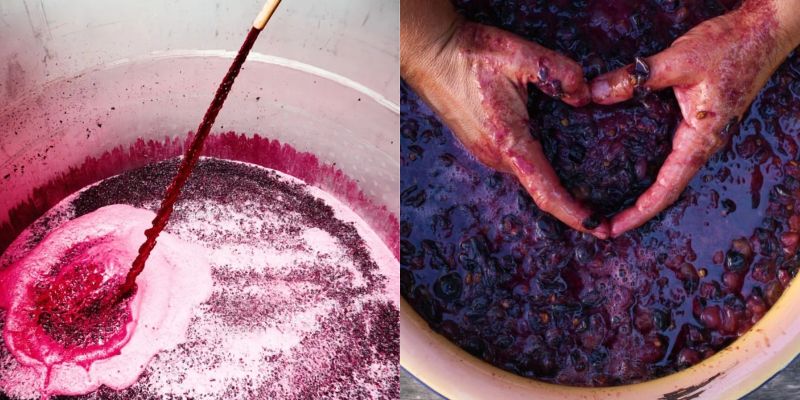Educating Sommeliers Worldwide.
By Beverage Trade Network

Winemaking is a delicate process that involves a careful balance of science and artistry. One crucial step in this process is maceration, which involves allowing grape juice and grape skins to interact during fermentation. Maceration plays a vital role in extracting color, tannins, and flavor compounds from the grape skins, contributing to the overall character and quality of the wine. Winemakers have the option to choose between pre- and post-fermentation maceration techniques, each offering distinct advantages and considerations. Knowing about the type or types of maceration involved with particular wines can help sommeliers sell more wine: the ability to tell a story to clients and capture their interest.
Pre-fermentation maceration, also known as a cold soak, involves soaking the grape must at low temperatures for a period before fermentation begins. This process allows for the gentle extraction of color, aroma compounds, and soft tannins from the grape skins. The duration of pre-fermentation maceration can vary depending on the winemaker's desired style and grape variety, but it typically ranges from a few hours to several days. This technique is commonly used for red wines, especially those made from thick-skinned grape varieties such as Cabernet Sauvignon and Syrah.
There are several factors that determine the use of pre-fermentation maceration. First, the grape variety plays a significant role. Certain grape varieties have more tannins and color compounds in their skins, making them well-suited for pre-fermentation maceration. Second, the winemaker's desired wine style influences the decision. If a winemaker wants a wine with a deep color, intense flavors, and structured tannins, pre-fermentation maceration can help achieve these characteristics. Lastly, the quality of the grapes also matters. Grapes with good phenolic maturity, meaning they have developed tannins and flavors, are more suitable for pre-fermentation maceration.
By contrast, post-fermentation maceration involves extending the contact between the grape skins and fermenting wine after primary fermentation finishes. The length of this maceration period can vary from a few days to several weeks. Post-fermentation maceration is often employed to enhance the extraction of tannins and flavors, particularly for red wines. It contributes to the development of a wine's structure, complexity, and aging potential. However, prolonged maceration can also lead to excessive extraction, resulting in harsh or astringent flavors and overly aggressive tannins.
The decision to use post-fermentation maceration depends on various factors. One important consideration is the grape variety. Some grape varieties have softer tannins, and post-fermentation maceration can help extract additional structure and complexity. The wine style also plays a role, as winemakers aiming to produce bold, full-bodied wines might choose to extend the maceration period. Additionally, the desired aging potential of the wine influences the decision. Wines intended for long-term aging can benefit from post-fermentation maceration as it contributes to the development of tertiary aromas and smoother tannins.
It's worth noting that winemakers often combine pre- and post-fermentation maceration techniques to achieve the desired flavor and structural components in their wines. This combination allows for a more nuanced approach and greater control over the final product. By employing both techniques, winemakers can extract the primary fruit flavors and aromas during pre-fermentation maceration while enhancing the structural elements during post-fermentation maceration.
In all, pre- and post-fermentation maceration are essential techniques in winemaking that allow winemakers to extract color, tannins, and flavors from grape skins. The decision to use either technique depends on various factors, including grape variety, desired wine style, and the quality of the grapes. Pre-fermentation maceration can contribute to softer tannins and enhanced aromatics, while post-fermentation maceration can add structure, complexity, and aging potential. By understanding and utilizing these maceration options effectively, winemakers craft wines that showcase the unique characteristics of the grape variety and reflect their desired style and vision. So, check out those wine tech sheets, figure out what maceration was involved in the wines on your list, and go sell more wine!